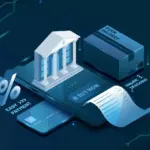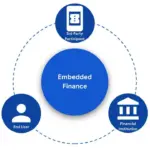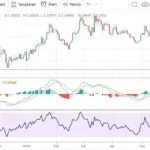The year 2025 marks a pivotal moment for peer-to-peer (P2P) lending, as this once-niche financial model continues to gain mainstream acceptance across global markets. Powered by digital platforms, advanced analytics, and blockchain technology, P2P lending is transforming the way individuals and small businesses access credit—bypassing traditional banks and offering a more transparent, inclusive, and efficient alternative.
1. What Is Peer-to-Peer Lending?
Peer-to-peer lending connects borrowers directly with investors through online platforms. Instead of relying on banks as intermediaries, these platforms allow individuals or businesses to apply for loans, while investors can fund them partially or entirely in exchange for interest returns.
This model benefits both sides:
- Borrowers often enjoy faster approval and more flexible terms.
- Investors can diversify portfolios and earn higher returns compared to traditional savings products.
Platforms like Funding Circle, LendingClub, and Mintos have led the charge globally, while regional players are emerging rapidly across Asia, Europe, and Africa.
2. Market Expansion and Technological Innovation
In 2025, P2P lending is experiencing accelerated growth due to several key factors:
- Digital Adoption and Fintech Maturity
With more consumers embracing digital finance, trust in online lending platforms has significantly improved. Mobile-friendly apps and seamless user experiences are fueling mass adoption. - AI and Data-Driven Risk Assessment
Artificial intelligence (AI) and machine learning models have enhanced credit scoring accuracy, allowing platforms to evaluate borrowers based on alternative data such as transaction history, online behavior, or even social metrics. This widens access to credit for underserved populations. - Blockchain and Smart Contracts
Some P2P platforms now leverage blockchain to automate loan disbursement and repayment through smart contracts, reducing administrative costs and increasing transparency. - Global Investor Participation
The rise of tokenized assets and cross-border lending platforms allows international investors to fund loans worldwide, turning P2P lending into a truly global marketplace.
3. A Boon for Small Businesses and Consumers
For small and medium enterprises (SMEs), P2P lending has become a lifeline. Traditional banks often impose strict lending criteria or require collateral that many small businesses lack. P2P platforms, by contrast, can offer:
- Faster approval times
- Lower barriers to entry
- Tailored repayment structures
Meanwhile, consumers benefit from competitive interest rates, especially for personal loans, debt consolidation, or education financing. In emerging markets, P2P lending is also supporting financial inclusion, giving credit access to people who have no traditional banking history.
4. Regulatory Developments in 2025
As P2P lending expands, regulators are stepping up to ensure investor protection and platform stability. In 2025, we’re seeing:
- Stronger Licensing Frameworks: Many countries now require P2P platforms to register under central bank supervision or financial authorities.
- Transparency Standards: Platforms must disclose loan performance data, interest rates, and default risks to investors.
- Investor Protection Mechanisms: Reserve funds and insurance schemes are being introduced to safeguard investor capital in case of borrower default.
These measures are increasing confidence in the sector, attracting institutional investors alongside retail participants.
5. Challenges Facing the Industry
Despite its growth, P2P lending faces several ongoing challenges:
- Credit Risk and Default Rates: Economic uncertainty and global inflation may impact borrowers’ repayment ability.
- Market Saturation: As more platforms emerge, competition intensifies, putting pressure on profitability.
- Cybersecurity Threats: With sensitive financial data being exchanged online, robust cybersecurity remains a top priority.
Successful platforms will be those that balance innovation with strong governance and risk management frameworks.
6. The Future of P2P Lending
Looking ahead, peer-to-peer lending is set to evolve into a more integrated and intelligent financial ecosystem.
Emerging trends include:
- Tokenized lending pools, enabling fractional investment in diversified loans.
- AI-powered portfolio management, allowing investors to automate lending strategies.
- Integration with digital banks, where P2P lending becomes part of a broader fintech service offering.
By 2030, analysts predict that global P2P lending volumes could exceed $1 trillion, driven by expanding digital adoption and continued regulatory clarity.
Conclusion
The growth of peer-to-peer lending in 2025 reflects a broader shift toward decentralized finance and financial empowerment. By connecting borrowers and investors directly, P2P platforms are not just reshaping credit access—they’re redefining trust, transparency, and inclusion in global finance.
As technology continues to mature and regulation strengthens, P2P lending is poised to become a cornerstone of the future financial landscape—where borrowing and investing are no longer confined to banks, but open to everyone, everywhere.














